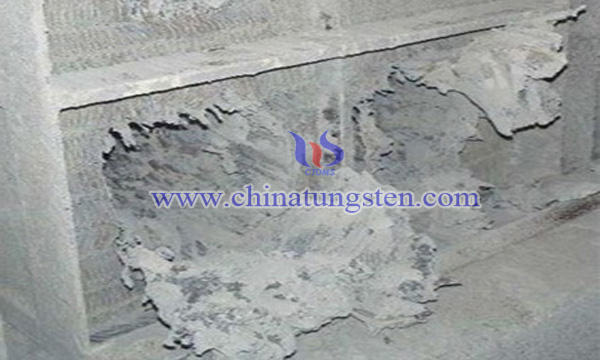SCR Waste Catalyst Recycling
- Details
- Category: Tungsten Information
- Published on Monday, 30 July 2018 10:46
Selective catalytic reduction (SCR) technology and its key equipment denitration catalyst industry have been vigorously developed for the treatment of thermal power plants. Vanadium tungsten (molybdenum) titanium catalyst is the most widely used SCR denitration catalyst in SCR technology.

The service life of SCR denitration catalyst is generally 3 years. In the future, there will be a large number of failed SCR denitration catalysts, which will become a major problem of solid waste disposal in the SCR denitrification industry. SCR denitrification catalysts mainly contain V2O5, WO3, MoO3 and TiO2, such as without proper treatment, it is bound to cause serious pollution to the environment. Therefore, the method of recycling SCR waste catalyst is also the main measure to save the cost of the power plants.
The regeneration technology of SCR waste catalyst mainly includes soot blowing, ultrasonic cleaning, chemical cleaning, active ingredient implantation and roasting. The honeycomb SCR denitration catalyst abandoned by a power plant is blocked, and the pore of 98% of the catalyst is partially damaged. First, the 3MP high pressure water gun is used to clean the dust on the catalyst surface. After the cleaning is completed, the catalyst is cut into a number of 20cm long segments. The small segment catalyst was taken to remove the ash in the pore size of the catalyst by water flushing, which was used in the ultrasonic scrubber to strengthen the cleaning effect.
After removing ash, the SCR denitration catalyst was added to 6% hydrochloric acid solution, then washed with ultrasonic wave at 30min, and the temperature was 30°C and soaked in 2H. Remove the catalyst and wash it 2 times at room temperature to remove the residual acid in the catalyst. Drying SCR denitrification catalyst at 80°C, adding 18% ammonia solution, ultrasonic washing 30min, soaking 3.0h at 30°C, removing the catalyst at normal temperature for 2 times, in order to remove the residual ammonia in the catalyst. The main components of SCR catalyst are TiO282.02%, V2O50.49%, WO34.93%, SiO23.25%, Al2O30.65%, As0.01% and CaO1.03%, no sodium and potassium are detected. The content of the main impurities is slightly lower than the content of impurities in the new SCR catalyst.
The SCR denitrification catalyst produced by this method is used to determine the activity and mechanical strength of the catalyst. The activity of the catalyst is 101.2% of the activity of the new catalyst and the mechanical strength of 98%. The main components were TiO281.83%, V2O51.15%, WO35.3%, SiO22.98% and S 0.25%.
After the extraction of vanadium tungsten or molybdenum from the abandoned SCR catalyst, a multipurpose recovery solution has been prepared, which shortens the process of preparing vanadium tungsten or molybdenum oxide in the traditional process and avoids the difficult separation of vanadium, tungsten or molybdenum from the conventional material resource utilization process. The content of vanadium tungsten or molybdenum in the prepared recovery liquid is made. It has high purity and can be used in the production, regeneration and other processes of denitrification catalyst.
- Tungsten Manufacturer & Supplier, Chinatungsten Online: www.chinatungsten.com
- Tungsten News & Prices of China Tungsten Industry Association: www.ctia.com.cn
- Molybdenum News & Price: news.molybdenum.com.cn
- Tel.: 86 592 5129696; Fax: 86 592 5129797; Email: sales@chinatungsten.com



 sales@chinatungsten.com
sales@chinatungsten.com